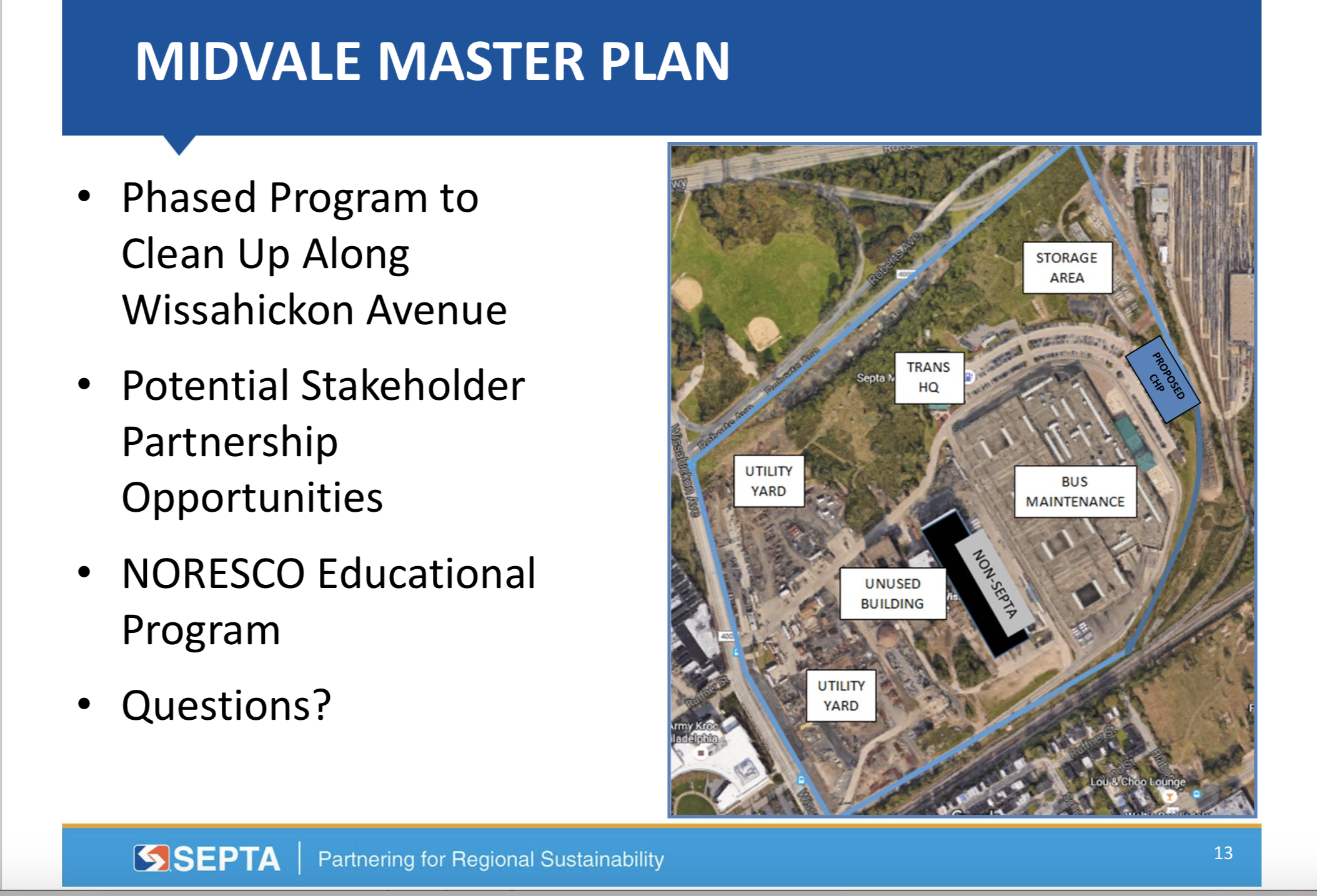Neighbors Against
the Gas Plants
Clean air and clean land is nice for nicetown!
Photo by Eddie Einbender-Luks
Photo by Eddie Einbender-Luks
The gas plant’s start up date was unannounced, but a neighbor reported seeing emissions coming from the stacks in February 2021. The plant adds 73 tons of toxic pollution, thousands of tons of CO2, and unmeasured amounts of heat and leaking methane gas to the air each year in Nicetown, SW Germantown, and lower E. Falls.
Electricity generated by the plant is sent to run regional trains that pass through Wayne Junction. PECO still provides 30% of the power to run the trains and is the back-up system.
SEPTA’s gas plant is located on SEPTA’s Robert’s Complex, between SEPTA’s Midvale Bus Depot at Roberts and Wissahickon Avenue and SEPTA’s Roberts Train Yard. It sits off of Roberts Avenue.
During the written public comment period in January, we requested a public hearing. Air Management Services granted our request in July, and at the hearing, the Health Commissioner added a month for written comments. SEPTA’s renewal permit for the CHP was a permit for all of Robert’s Yard, which includes the CHP. The 2017 permit for the CHP was separate for SEPTA’s permit for the rest of Roberts Yard. See Events/Updates
We wanted the permit to be denied.
The EPA ECHO site reported two violations of pollution limits. Repairs were made on equipment in one of the two generators and workers were instructed that testing the diesel backup generator during ozone season is prohibited.
Neighbors deserve to know what is coming into the air and when it is happening, so that they can protect themselves by closing windows and not exercising outside. We are requested continuous air monitoring units in the smoke stacks which operate 365 days/ year and to post the readings directly to the Health Department website in real time in a user friendly way for the general public.
The Health Department has no ambient air monitoring station in N. Philadelphia west of Broad St. We asked that one be set up near SEPTA’s property to measure ground ozone, NOx, VOCs, Fine Particulates and HAPS (Hazardous Air Pollutants). And we asked that the monitors report daily to the Department website in real time and be easy for the public to access.
We wanted AMS to work with SEPTA to plant thousands of trees on SEPTA’s property and on sidewalks surrounding it to mitigate some off the pollution from the combined heat and power plant (CHP) and diesel fumes from SEPTA’s bus depot and the CXS trains at Robert’s Yard. . Unfortunately trees cannot capture hazardous air pollutants.
Since the climate crisis is rapidly escalating, we wanted AMS to require and help SEPTA apply for federal grants to pay for solar panels on all of SEPTA’s rooftops on buildings at the Roberts Yard property, at Wayne Junction, and other properties. Electric buses could be charged with solar power and other SEPTA vehicles could transition to electric.
We objected to the addition of “De Minimis” Emissions on p 19 of the permit because it allows pollution to increase, if they are kept under the limit of a synthetic minor permit. The permit is right at the wire of that limit already and therefore we felt it was nonsense.
We requested that during bad air days (code orange or red) that the plant be turned off and that during ozone season the plant should be turned down. We also requested that gas usage and emissions should not ever increase above the current renewal permit’s monthly expected emissions, to make up for gas not burned during ozone season.

In 2011, SEPTA released a comprehensive sustainability plan. However, the gas plant violates each section of their "three pillar" approach. Click to read their Energy Action Plans for 2011, 2012, and 2018. Also see details of SEPTA’s goals and 5 year business plans in SEP-TAINABLE 2020.
Below is the City Health Department’s official list of annual toxic emissions from SEPTA’s gas plant in Nicetown. One toxic emission amount that is not provided by the city is ammonia. Non-toxic greenhouse gases are not listed. We can expect some methane leakage and tons of carbon dioxide from the combustion process. We don’t know the amount of CO2 but roughly estimated it’s somewhere between 36,000 - 50,000 tons, (depending on who did the math.)




Check out our events, join us on facebook, email us at nixthegasplants@gmail.com, text or call us at 215-888-1894.